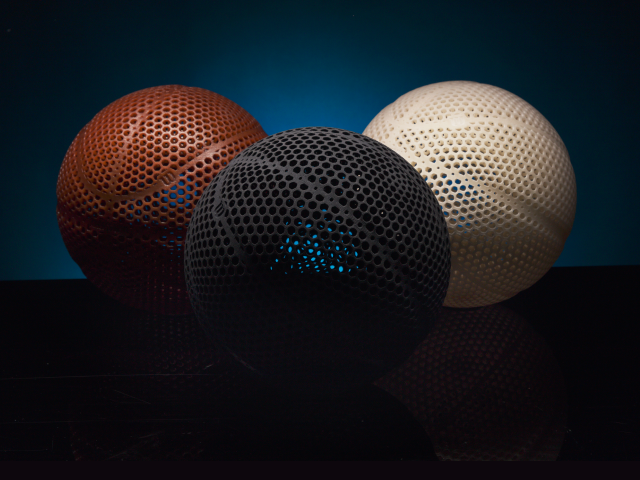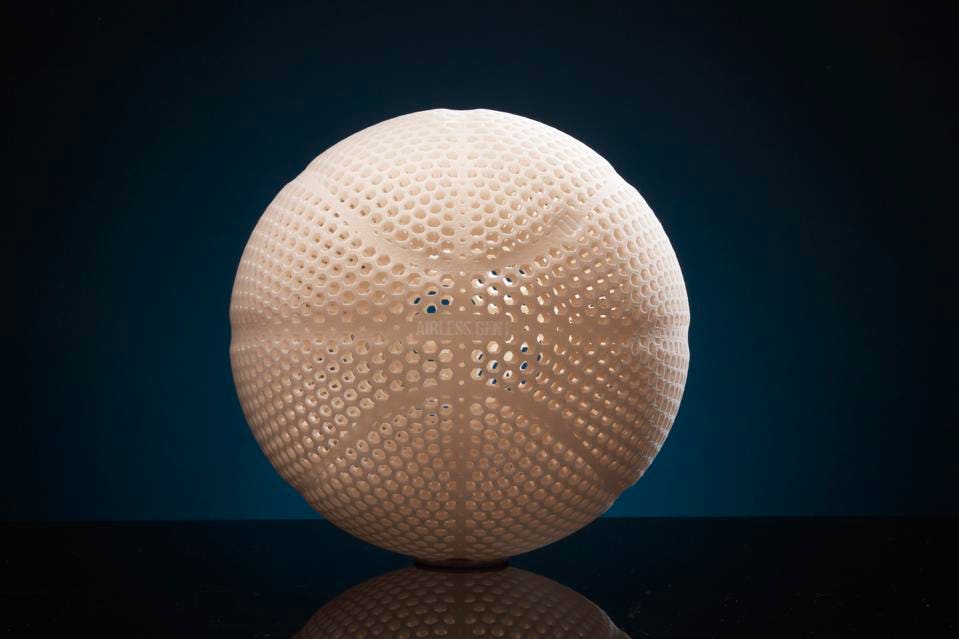U.S. sports equipment manufacturer Wilson Sporting Goods Co. has announced that it will sell its 3D printed airless basketball.
First unveiled as a prototype last year, the 3D printed Wilson Airless Gen1 basketball will be priced at $2,500 in a limited release starting on February 16, 2024.
As with the prototype, the basketball has been co-developed with 3D design specialists General Lattice, 3D printer manufacturer EOS, and post-processing company DyeMansion. California-based SNL Creative has also joined the partnership as the primary manufacturing hub for the product launch.
According to Wilson, the basketball is fully functional, and meets the performance regulations of an NBA ball in weight, size and bounce.
The Airless Gen1’s 3D printed lattice structure features eight panel-like “lobes,” removing the need for inflation before use. The Airless Gen1 will be available in jet-black, brown and off-white natural colors.
EOS, DyeMansion and General Lattice received an honourable mention in the 3D Designer of the Year category at the 2023 3D Printing Industry Awards for their work on the Wilson Airless Prototype basketball.

Wilson to sell Airless Gen1 3D printed basketball
The Wilson Airless Gen1 basketball is a direct evolution of the 3D printed basketball prototype unveiled during the 2023 NBA Slam Dunk event.
Designed with GL Labs, General Lattice’s enterprise solutions service, Wilson’s prototype basketball was 3D printed using an EOS P 396 SLS 3D printer. Post-processing was completed by DyeMansion and its DeepDye Coloring and VaporFuse Surfacing technologies.
Set to debut during NBA All-Star weekend’s NBA crossover activation in Indianapolis, the new commercially available basketball features some new modifications. The 3D printed lattice underwent digital and physical testing to create more consistent ball performance.

Additive manufacturing and post-processing times have also been reduced with the addition of holes into the lattice channels, allowing loose powder to be removed quickly after 3D printing. The complete production process includes 3D printing, smoothing, dyeing and sealing.
Wilson hopes that the commercialization of its airless basketball will drive industry interest in 3D printing, with greater adoption potentially eliminating air-retention challenges within ball manufacturing. 3D printing is also said to offer sustainability advantages, and allow products to be quickly adapted to meet customer needs.
The company will now look to further optimize its Gen1 design, with a view to launching a Gen2 version in the future.

3D printed sporting goods hit the market
3D Printing Industry recently surveyed industry experts on key 3D printing trends and the future of 3D printing. Here, the expansion of additive manufacturing into consumer applications was highlighted as a growing area.
This has certainly been evident within the production of commercially available sporting goods. Indeed, this is not the first time Wilson has leveraged additive manufacturing in its production workflow.
The company has previously partnered with Nexa3D to prototype 3D printed injection mold tooling for its youth baseball bat grips. By leveraging NXE400 resin 3D printers, Wilson reportedly achieved improved design, time-savings, and R&D freedom.
Elsewhere, Japanese lifestyle golf brand Designer recently launched its new titanium 3D printed golf club heads. The new golf club heads are produced using Farsoon Technologies’ metal 3D printers, and are said to be ultra-strong and lightweight. According to Farsoon, additive manufacturing has allowed Designer to innovate design and produce golf club heads that are “top-of-the-line” in terms of distance, accuracy, and stability.
Outdoor gear manufacturer Jack Wolfskin also leverages additive manufacturing in the production of its new 3D Prelight Rise Backpack. The 35-liter hiking pack features 3D printed Aerorise padding which reportedly offers improved comfort and air circulation.
The 3D printed backpack panels are produced using 100% recycled fine-grained plastic, and has been developed in collaboration with plastics technology specialist Oechsler and 3D printing company Carbon.
Subscribe to the 3D Printing Industry newsletter to keep up to date with the latest 3D printing news. You can also follow us on Twitter, like our Facebook page, and subscribe to the 3D Printing Industry Youtube channel to access more exclusive content.
Are you interested in working in the additive manufacturing industry? Visit 3D Printing Jobs to view a selection of available roles and kickstart your career.


